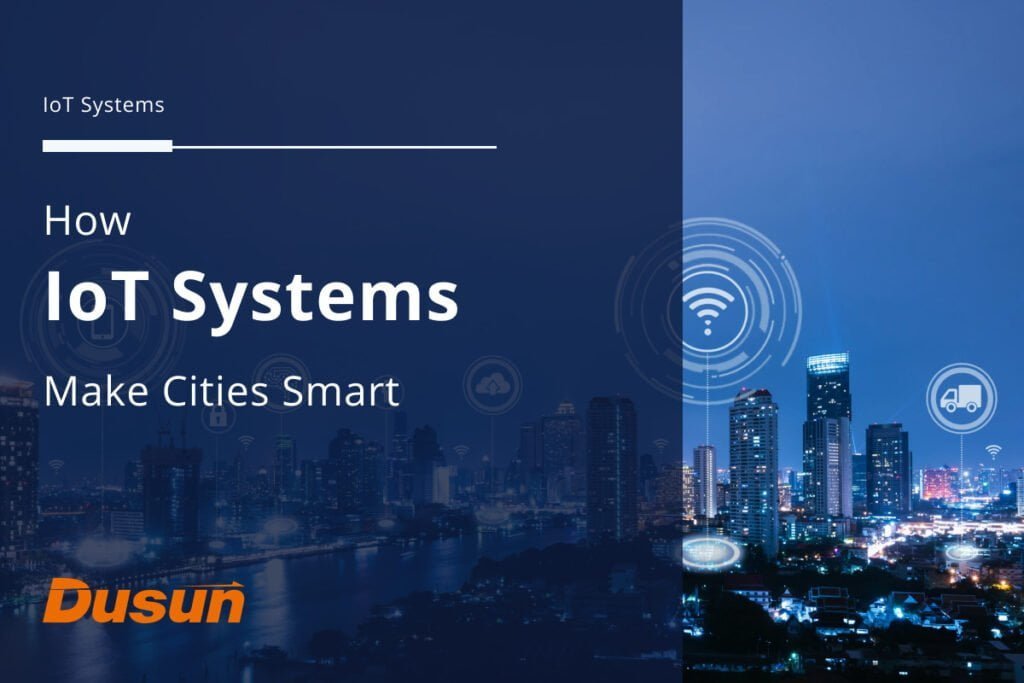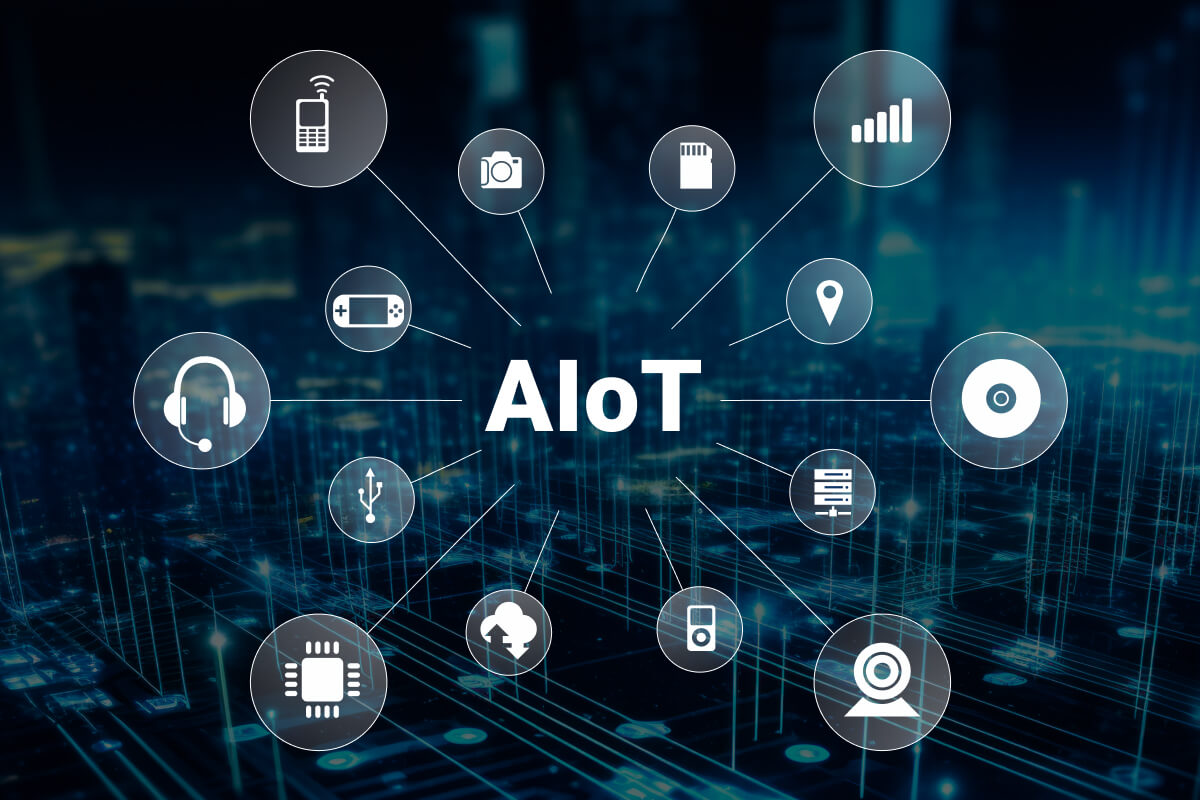IoT is revolutionizing our daily lives. At home, smart devices and sensors add a new level of connectivity that provides a convenient stress-free environment. While you may live in a smart home or apartment, you may be wondering about smart cities. After all, smart cities became buzzwords several years ago but for most of us, the present doesn’t appear to have caught up with the predictions. At Dusun, we build products that can help cities make a smart transition and make them simpatico with your rhythm. The technology is here.
What Is a Smart City?
A smart city is a municipality that uses Internet of Things (IoT) devices and other technology that collect and transmit information to manage assets and resources efficiently for residents and the government. Retrofitting cities with smart devices and incorporating them into new project planning can help achieve the 17 sustainability goals outlined in the United Nations’ 2030 agenda. Specifically, goal number 11 states, “Make cities and human settlements inclusive, safe, resilient and sustainable.”
What Do Smart Cities Look Like?
We live in a world of cities built well before the advent of new technologies. From a purist perspective, a truly smart city would need to be planned and constructed using today’s most sophisticated network computing infrastructure. Is that happening?
In 2017, Bill Gates bought a big chunk of land in Arizona to build his own smart city. The project is called Belmont and will be a “future-proof” city with an emphasis on high-speed networks, data storage, new manufacturing processes and autonomous vehicles.
In 2019, with great fanfare, Alphabet announced its Sidewalk Labs 1.9 billion-dollar investment to create a smart city on a section of Toronto’s waterfront. Dubbed Quayside, the project would cost a total of $3.9 billion. Ultimately, the project was canceled, and Alphabet cited the pandemic as the official reason. However, Quayside raised many data privacy concerns, since occupant data would need to be tracked to make the development connected. Regardless, reading Sidewalk Labs’ Master Information Delivery Plan provides a vision of what a smart city built from the ground up could look like.
More encouragingly, there are multiple international initiatives to build smart cities from scratch, including the following:
- South Korea’s city of Songdo, a $40 billion project
- Saudi Arabia’s Neom
- Floating City in the Maldives
- Toyota Woven City
- Abu Dhabi’s Masdar City
- China’s Tencent’s Net City
Beyond technology, building smart cities from scratch shares another feature: a high price tag. Beyond a vision, only a willingness to make these massive investments can bring an artist’s rendering to life. Where privacy concerns are a factor, private stakeholders need to earn citizen trust with government partnerships that are built on transparency and a shared commitment to privacy protection.
Retrofitting Existing Cities and Making Them Smart
While purpose-built smart cities currently amount to just over a handful, established cities have begun to embrace smart technologies. Many of the technologies needed to support a smart city already exist. The challenge is incorporating these devices and systems into existing infrastructure in an effective way. The good news is that projects are underway in a number of cities, including the following:
- Los Angeles is using sensors and artificial intelligence to help manage traffic flow.
- San Diego has a program called Smart Streetlights that uses LED lights and sensors to help the city save energy, reduce light pollution and improve public safety.
- New York City is using WiFi-enabled kiosks to provide free internet access and phone charging stations. The city is also using sensors to track things like air quality and noise levels.
- Philadelphia has a program called PhillyStat that uses data to help city departments improve performance.
- In Barcelona, a citywide network of sensors collects data that is used to improve things like traffic flow and public safety and waste collection.
- Amsterdam’s smart city platform has a network of motion-activated LED lights that are activated by pedestrians and cyclists. The city is also using sensors to track air quality.
- Cologne-Nippes’s district in Germany uses sensors to monitor parking availability and traffic congestion.
How Do Smart City Devices Communicate with Each Other?
The devices in a smart city need to be able to talk to each other. They need to share data so that the whole system can function properly. The way they communicate is through protocols built into IoT devices and sensors. Smart city devices typically communicate with each other using a variety of protocols.
Short-range protocols include the following:
- Bluetooth Low Energy Sig-mesh(BLE): Bluetooth is commonly used for things like connecting headphones to your phone. Bluetooth can be used for things like connecting sensors to each other or to a central control system.
- Zigbee and Z-Wave: Designed for low-power devices, Zigbee can connect battery-powered sensors to each other or to a central control system.
Long-range protocols include the following:
- LoRa: Designed for low-power devices. In a smart city, LoRa can be used for things like connecting sensors that are located far away from each other or from a central control system.
- NB-IoT: A cellular protocol that is designed for low-power devices. In a smart city, NB-IoT can be used for things like connecting sensors to the internet or to a central control system.
- 5G: The fifth generation of cellular technology. Offers increased upload and download speeds to connect smart devices to the internet or to a central control system.
- Ethernet: Ethernet is a wired protocol that is commonly used for connecting devices to the internet. In a smart city, Ethernet can be used for connecting sensors to a central control system.
- WiFi: A wireless protocol that is commonly used for connecting devices to the internet.
- Sig-mesh: A wireless protocol that is designed for connecting battery-powered devices to each other or to a central control system.
Smart Cities Answer the Call for Sustainability
The United Nations reports that by 2050, 66% of the world’s population will live in cities. This urbanization trend will strain city resources like food, water and energy and impact transportation. Smart city technology can manage urban infrastructure more efficiently. While many cities have already embraced smart devices and sensors, it’s only the beginning to shape the future. Solutions are here. All that’s required is a vision and, of course, a willingness to invest.
Dusun Smart City Solutions
Dusun offers smart products that can provide smart city solutions. Our cloud platform gateways integrate with leading cloud platforms like Microsoft Azure and Amazon Web Services. Dusun programmable IoT gateways are bridges between IoT devices and the internet. They support multiple protocols including Zigbee, BLE, SIG mesh, Z-wave, LoRa, Wi-Fi and cellular networks. Furthermore, our devices allow programming, secondary development, open SDK and open APIs. We invite you to see our full range of products and to reach out to us to discuss how we can fulfill your requirements.
Sources
Amsterdam Smart City – Let’s create better streets, neighborhoods, and cities
BNN Bloomberg – Sidewalk Labs announces $1.3B investment in Toronto development
Computer Weekly – European cities moving fast to change business of parking
Engadget – Sidewalk Labs finally publishes its smart city master plan
Masdar City – Overview
Nbbj – Tencent Shenzhen Headquarters Project (Net City)
Neom – When We Come Together, Change Happens
Sidewalk Labs – Sidewalk Toronto
Songdo IDP – Where the future of cities is taking shape
SSRN – A Historical View of Smart Cities: Definitions, Features and Tipping Points
The National News – Maldives to build one of the world’s first floating cities as response to climate change
Toyota Woven city – Our Vision
Triple Pundit – Sidewalk Labs’ Failure and the Future of Smart Cities
United Nations – Transforming our world: the 2030 Agenda for Sustainable Development
World Economic Forum – Bill Gates is building a smart city in Arizona
















